After a successful delivery, your newborn becomes the most cherished and bothersome of all things that draw your attention. Cherished because you want the absolute best for it, and bothersome because of all the crying and extra, never-ending work it brings to your life every hour of the day.
One of the most common objects that helps you easily deal with this paradoxical situation is a pacifier. However, few people stop to wonder, how safe is a pacifier for a baby?
In this article, we will answer this question and provide you with information on the following topics.
- Why Give a Pacifier to a Newborn?
- Advantages of Giving Pacifiers to Newborns
- Pacifiers and SIDS
- Drawbacks of Using a Pacifier
- Pacifiers and Mid-Ear Infections
- Dos and Don’ts of Pacifiers
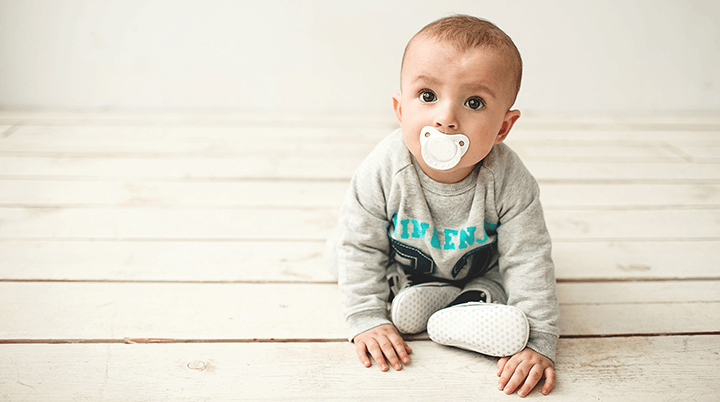
Why Give a Pacifier to a Newborn?
Pacifiers are accessories typically made from rubber and shaped in the form of female nipples. Also called soothers and binkies, and as the original name implies, they are used to comfort a baby and keep it calm. How do these rubber accessories work to this effect?

Babies have a natural impulse to suck on the mother’s breast at all times. More so that this impulse doesn’t just develop after birth, but is seen in babies even when they are in the womb. How do they satisfy this urge in the womb? They have an urge for non-nutritive sucking, making use of their fingers when they can.
When they are out of the womb, the mother’s breasts serve as an important source to satisfy a baby’s urge for both nutritive and non-nutritive sucking. Regardless of this, and as you would agree, you can’t give your baby access to breasts at all times.
Pacifiers then become the go-to accessories. The item is so common that, in the West, 75% of babies make use of it. It makes your baby calm when this impulse comes calling and is not necessarily bad for your child. Regardless of this, when are they safe for your child to use?
When Can Newborns Start Using a Pacifier?
There is no exact period you have to wait for before giving your child a pacifier to suck on. However, it is recommended by the American Academy of Pediatrics, whose advice can be relied upon worldwide, that you wait till when you naturally develop a nursing routine with your child. Why is this?
Nipple confusion is important when talking about sucking reflexes. Your child needs to know just when to get engaged in nutritive sucking and non-nutritive sucking. Getting used to a routine helps you ensure this and this usually takes up to four weeks.
Some babies also take time to develop sucking muscles for effective nutritive sucking. Due to this, it is also recommended that the use of pacifiers is avoided until they can suck out the milk by themselves.
Advantages of Giving Pacifiers to Newborns
Regardless of how you may feel about using pacifiers, they hold several advantages for both you and your child. The first of these, and probably the most impactful, is that they soothe and keep your baby calm between meals.
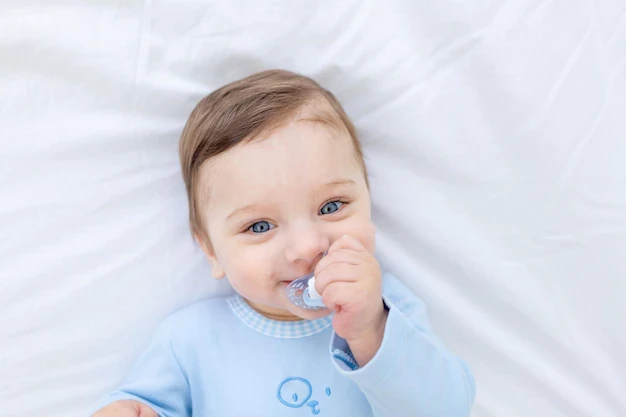
A lot of babies are happy and visibly calmer when sucking on something. From discomfort to utter restlessness, a pacifier gets your baby into a very calm and comfortable state.
This helps you avoid the situation of the baby crying, whether you are moving around or taking the baby through the stress of medical checkups. Pacifiers are even great accessories to get your baby to sleep, and this will definitely come in handy.
What’s more, they are disposable. Unlike having your baby get used to sucking on thumbs, which may be a difficult habit to break, with pacifiers, you just simply throw them away.
Pacifiers and Air Travel
We talked about how pacifiers soothe your child while you move around. However, it may also be interesting for you to learn that they play an important role in keeping them comfortable during air travel.
Here, comfort during air travel is related to the atmospheric pressure while on the go. In the air, the atmospheric pressure changes, which causes fullness and pains in the ears. As your baby can’t ease the pain itself, sucking on a pacifier does the trick.
By sucking on a pacifier, the ear is easily popped. With this, the pressure is eased without your baby facing a great deal of discomfort.
Pacifiers and SIDS
Sudden Infant Death Syndrome (SIDS) or cot death is the unexpected death of a baby without any specific explanation pointing to the cause. This is extremely scary, and one situation you don’t want to find yourself or your infant in.
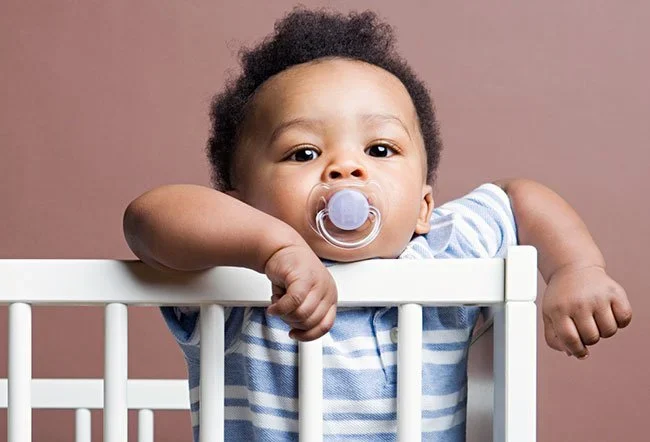
Sadly, 90% of SIDS cases occur during the first six months after the child’s birth, with the most occurring between the first and fourth months. It is a condition that has a 100% mortality rate but thankfully has some identified causes.
Some of the more common states of deceased children from SIDS include brain defects, low birth weight, and respiratory infections. Nonetheless, these aren’t direct death sentences and a child may be perfectly fine and still succumb to this condition.
How Do Pacifiers Help with SIDS?
According to some research reports, pacifiers have been reported to reduce the risk of SIDS, which is an excellent reason to make use of them. Although a lot of countries don’t directly recommend pacifiers as a countermeasure, associated studies spanning over 38 years show how helpful they can be.
When your baby sucks on a pacifier, its tongue is pushed forward and this reduces the risk of its airways congesting. Studies recommend that the pacifier is given to the infant when it is asleep, either during the day or night time.
SIDS is rare among infants, with the UK reporting about 200 deaths per year. However, the utter randomness of it is frightening enough for mothers, and you will want to take all measures available for its prevention.
Drawbacks of Using a Pacifier
Regardless of how enticing the use of pacifiers is, there are also some identified disadvantages.
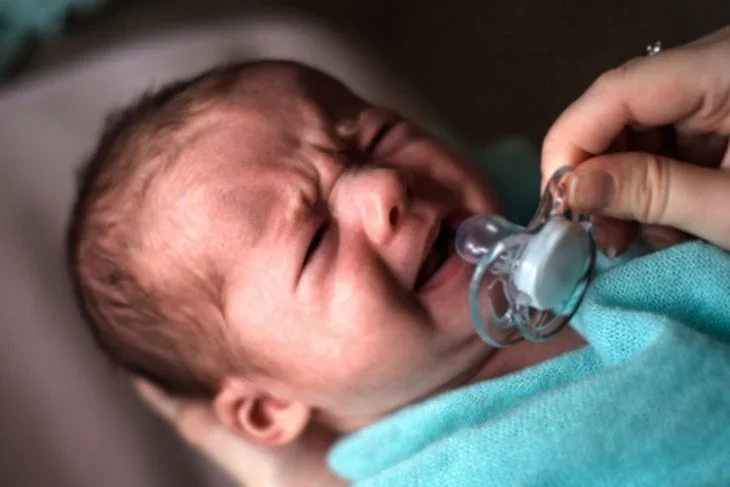
One disadvantage you ordinarily expect to face while using a pacifier is your baby having a seeming over-dependence on it.
Due to the amount of comfort it brings, you can expect a cry from your infant anytime it falls out of its mouth. Other disadvantages tend to be more serious.
There is the risk of pacifiers disrupting the breastfeeding process. This is especially true when they aren’t implemented after a nursing routine is developed. To avoid this, always make sure that you don’t give your baby a pacifier until after three to four weeks of breastfeeding.
Pacifiers and Dental Problems
Excessive use of pacifiers, especially when the period is prolonged until after the child’s first two to three years may cause some dental issues. These dental issues include crooked teeth, a misaligned bite and jaw, or a protruding front tooth.
These physical side effects of pacifiers are recognized by both the American Academy of Pediatrics and the American Dental Association.
Pacifiers and Mid-Ear Infections
Studies show that pacifiers increase the chances of middle-ear infection (otitis media) in infants by more than three times. Thankfully, these controlled and randomized studies showed that there is a response to ear-drop doses in infants if these doses are taken continuously.
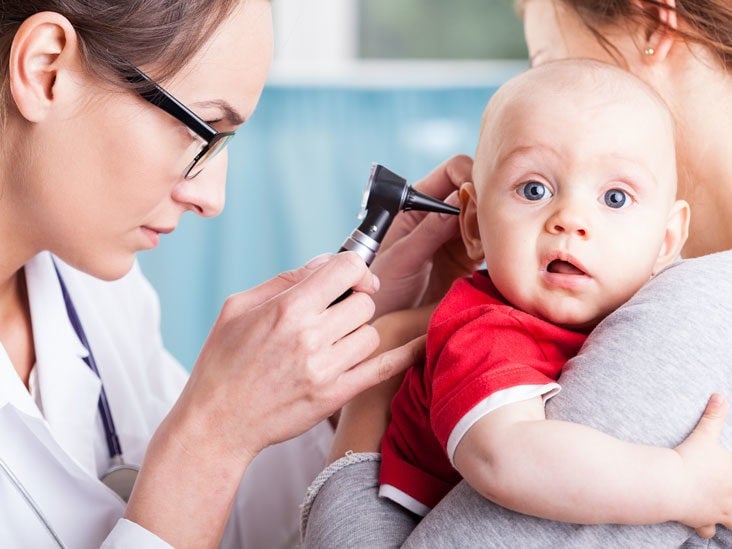
The studies also show that the chances of developing these middle-ear infections are increased by socio-demographic factors. Regardless of this, however, it is advised that parents avoid the use of pacifiers if the child has previously suffered from a middle-ear infection to avoid a recurrence.
A middle-ear infection is probably the greatest disadvantage of giving your child a pacifier and you have to manage this properly. Thankfully, there’s a catch.
Managing Middle-Ear Infections
The longer the use of pacifiers, the higher the risk of developing a middle-ear infection is. This is why the rate of infections is lower in infants under the age of six months.
What this means is that using a pacifier for the first six months is the most ideal option for you. Not only does your child stand a lower risk of developing an infection, but you also get all the advantages a pacifier gives against SIDS and dental issues.
Dos and Don’ts of Pacifiers
When offering your child pacifiers, there are certain tips you may have to follow to get the best out of the accessory and also ensure the safety of your child.

The first is that you must use a one-piece pacifier rather than a pacifier with separate parts. This is because a pacifier with separate parts presents a choking hazard to your child.
You must also keep the pacifier clean at all times. Purchasing a dishwasher-safe pacifier makes this easy but, alternatively, you can boil the piece to kill germs.
What you don’t want to do is wash the pacifier with your mouth, sugar-coat the pacifier, or use the pacifier when your baby isn’t comfortable with it.
Extra Tips for Using a Pacifier
Ensure you change the pacifier often and immediately change it if you notice any sign of damage. Avoid attaching excessively long strings to the accessory to prevent it from wrapping around your baby’s neck.
Additionally, give the pacifier to your child only between meals and be cautious when using pacifier clips.
Conclusion
From our research, we see that pacifiers are safe accessories that bring comfort to both you and your child. The only caution you have to take is to avoid excessive use of it and offer it to your child at the right time.
The right time here is after a natural nursing routine has been developed and between meals. Using a pacifier may help you soothe your newborn baby and focus on other aspects of newborn care.







